5 learnings from Tagmarshal’s 2025 PGA Show Education Session with Hazeltine and Erin Hills
The 2025 PGA Show in Orlando, Florida was an action-packed, energetic affair, and Tagmarshal was excited to join – bringing technology solutions, data-driven insights and innovation to the thriving golf industry.
Tagmarshal’s Education Session on Thursday, January 23 featured two world-famous courses, Hazeltine National and Erin Hills, and was titled “Lessons from major hosts Hazeltine and Erin Hills: How optimization tech and data are reshaping on-course operations – and how your facility can benefit too!”
Prof. Kris Schoonover, a USGA expert and Director of Operations at Erin Hills was joined by Kyle Brandt, PGA, Hazeltine National’s Head Golf Professional, and together they outlined how their operations are harnessing the full power of optimization tech and data.
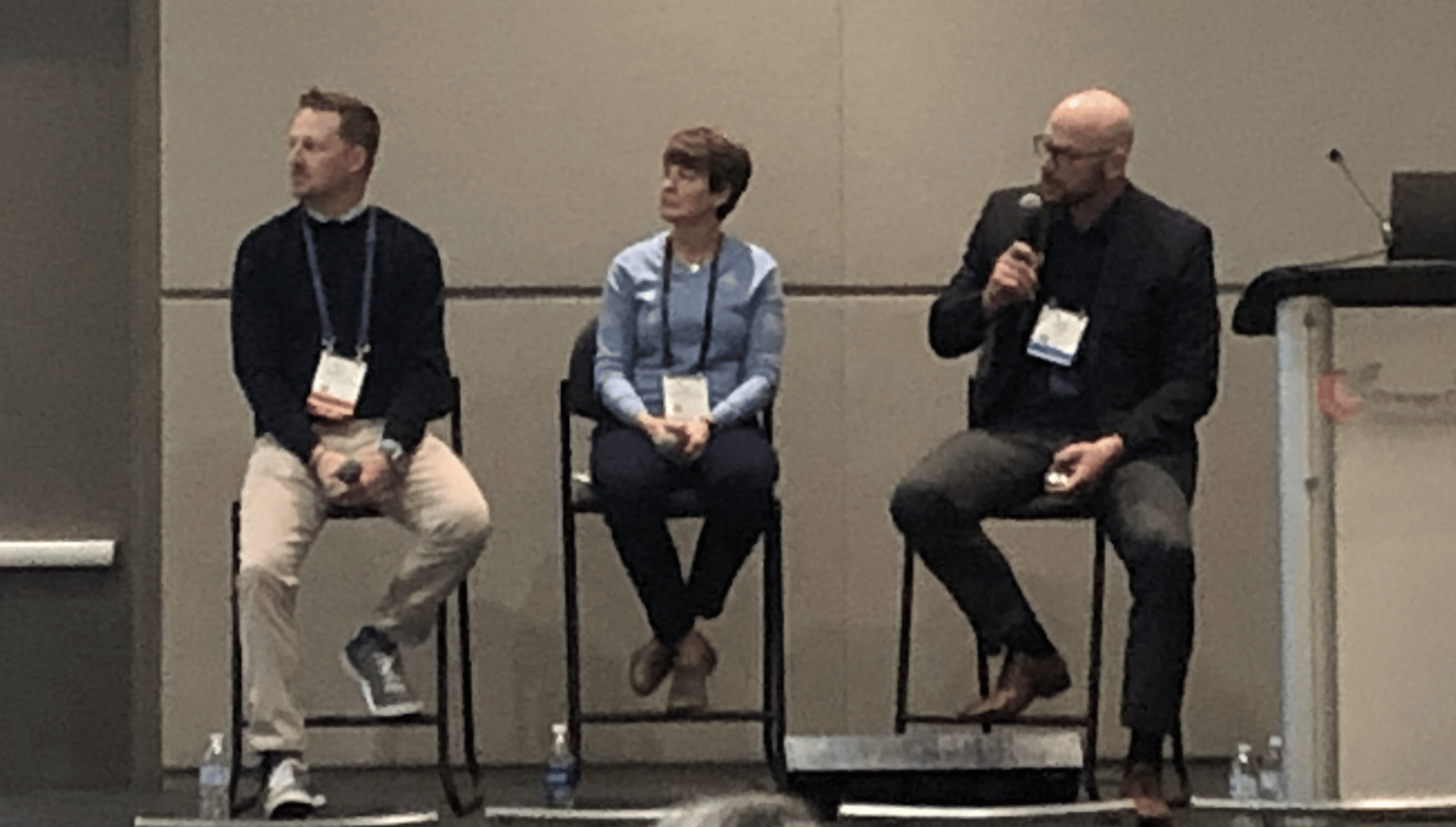
Here are 5 key learnings from the Education Session that will benefit courses ranging from high-end private clubs to well-run municipal courses.
1. How golfer touchpoints shape the experience
USGA research shows there are more than 1,000 touchpoints in a golfing experience – before, during, and after a round – that greatly influence satisfaction.
Ranging from ‘engage’ (occurring before a round) to ‘extend’ (touchpoints that occur when golfers have left the course), each of these presents an opportunity for a course to differentiate itself and provide a superior experience.
Touchpoints that serve as perfect delighters (enhance overall satisfaction) include the professionalism of player assistants and information around the course’s pace of play expectations. Conversely, perfect frustraters or dissatisfiers include the speed of other players on the course and corrective actions for golfers falling behind pace, which revolve around interactions with player assistants.
At a private club like Hazeltine, there is often a high-touch environment and operators can plan the member and guest journey effectively. At a public or resort course, such as Erin Hills, there are far more variables that can impact the experience and the more that can be done to mitigate these factors, the higher likelihood there is of dealing with them effectively.
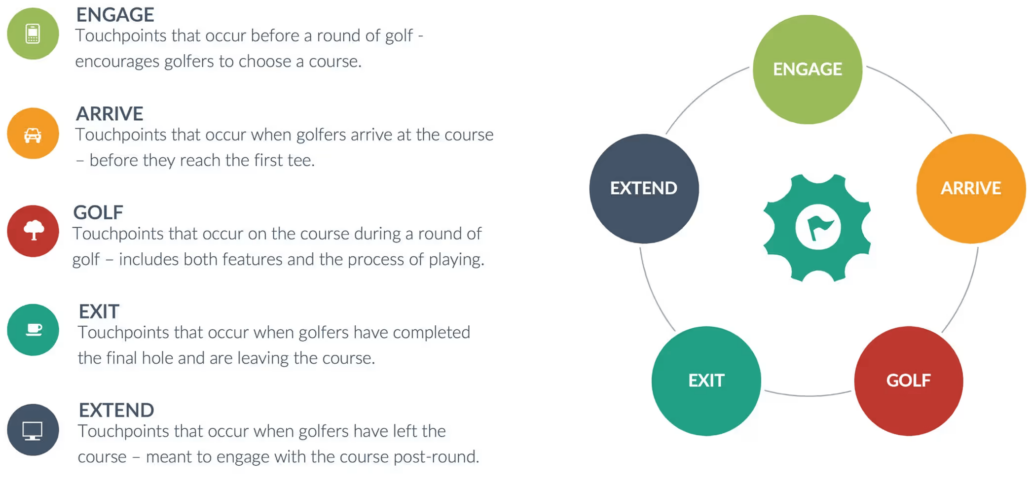
2. Gathering and analyzing data to identify patterns
Erin Hills prides itself on providing a memorable player experience with exceptional service and a steady pace and flow of play.
To achieve this, and to control and pre-plan the golfer journey, the course needs to understand how certain variables impact pace and flow of play and the overall experience.
Gathering and analyzing this data is made easy using Tagmarshal’s system, with the extra data fields inputted into the tee sheet alongside the player names. When the course upgrades to the latest system this coming season, this process will be made even easier thanks to the Data Directory feature.
Variables tracked by Erin Hills include:
- New players versus returning players
- Golfer handicaps
- A group of friends versus strangers playing together
- White tees versus green tees
This level of detail isn’t always viable for everyday operators with smaller teams. At a minimum, though, courses should track whether a player is a first-time player at the course, or even a first-time golfer.
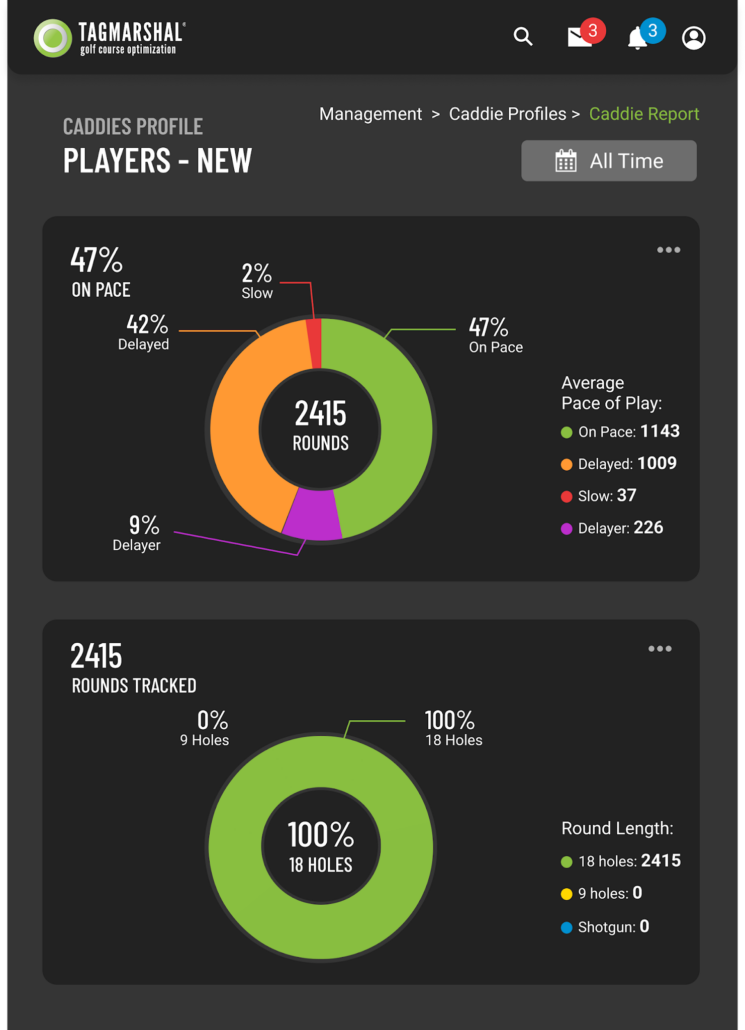
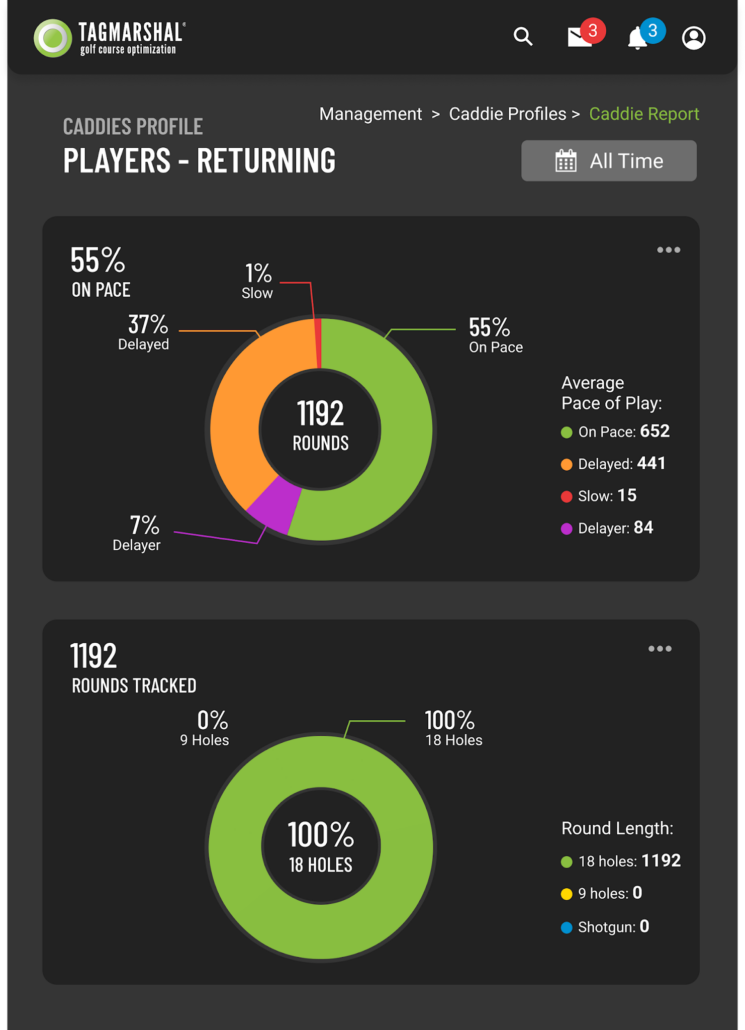
3. Proactive pace management leads to revenue gains
Through the shrewd use of optimization technology and proactive pace management techniques, Erin Hills has seen revenue gains of $700,000 per season from green fees alone.
The main driver here is that the course knows that the overwhelming majority of rounds are finishing on or below the goal time of 5h03m. Because of this, they have removed the ‘buffer’ tee times they previously had during peak times of the day that went unsold.
Additionally, Erin Hills can confidently sell two more tee times at the end of the day, knowing that these rounds will finish before the course is shut down.
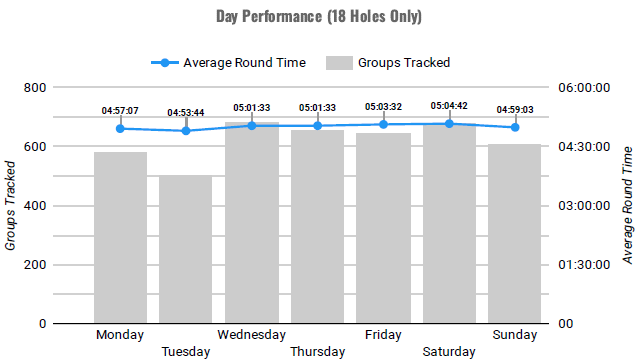
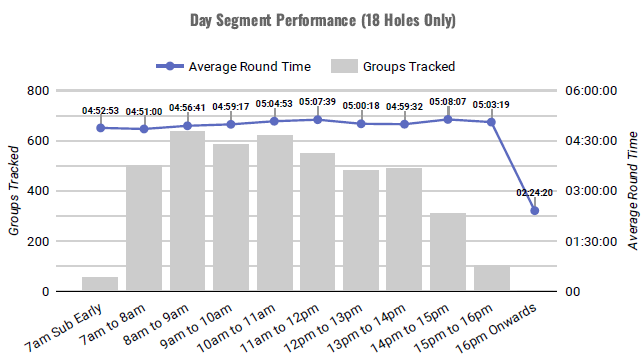
Industry research shows that 40% of first-time course visitors don’t return, but operators can reduce this number by taking better care of these groups and making them feel welcome. This may include a player assistant checking in and welcoming the group, letting them know about any specials that may be running at the clubhouse or pro shop, and asking the group to give feedback when they complete their round.
These relatively minor efforts drastically increase the likelihood that players will return to the course, and continue playing the game of golf, which is a win for both the individual operation and the industry at large.
4. Delivering a consistent, exceptional member experience at Hazeltine
Hazeltine National has a long, storied history and the club’s members expect a high level of service excellence and a seamless player experience from start to finish.
To facilitate this, Hazeltine relies on the Live Map feature, which gives them a real-time overview of where each playing group is on the course and how they are doing relative to the course’s goal time of 4h10m.
This enables them to proactively and efficiently identify out-of-position groups so staff can intervene before they have an adverse impact on the rest of the field.
In addition, Tagmarshal’s powerful machine learning and AI capabilities draw on data from more than 75 million tracked golf rounds to predict potential bottlenecks and issues, guiding staff to focus on the on-course interventions that will have the biggest impact.
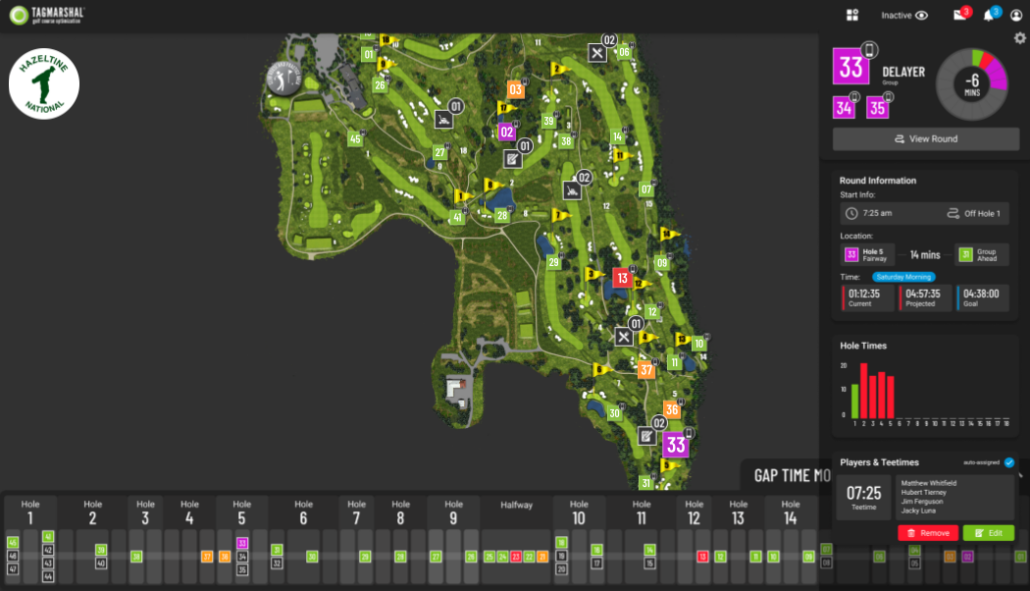
There are many ways to elevate the player experience, such as a clubhouse renovation or a course redesign, but both of those require large capital investment. With optimization technology, courses can elevate the experience at a fraction of the cost by giving teams what they need to operate more effectively and more efficiently, freeing up staff hours to focus on service and the touchpoints that really matter.
5. Using data to guide difficult conversations
It’s never easy to have conversations around pace with members, and even more so when you don’t have any data to rely on. These tough conversations are vital, though, to building a pace of play culture at a club and holding members accountable.
Kyle Brandt, PGA, Hazeltine National’s Head Golf Professional, knows that all of the data gathered by Tagmarshal’s system is tied to each member and can be accessed via their Player Profiles.
Over time, this will highlight consistently slower players and he can rely on this data to guide and inform tougher conversations with members, as well as using it to report to the golf committee. These interactions are now framed in a neutral, fact-based way, rather than being confrontational.
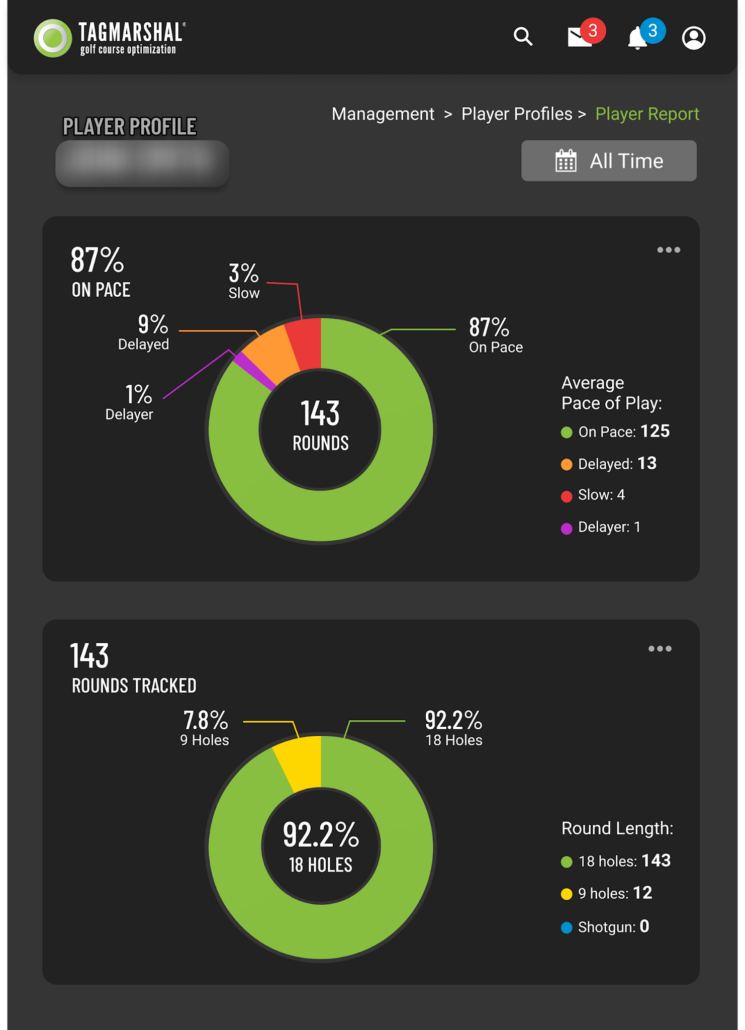
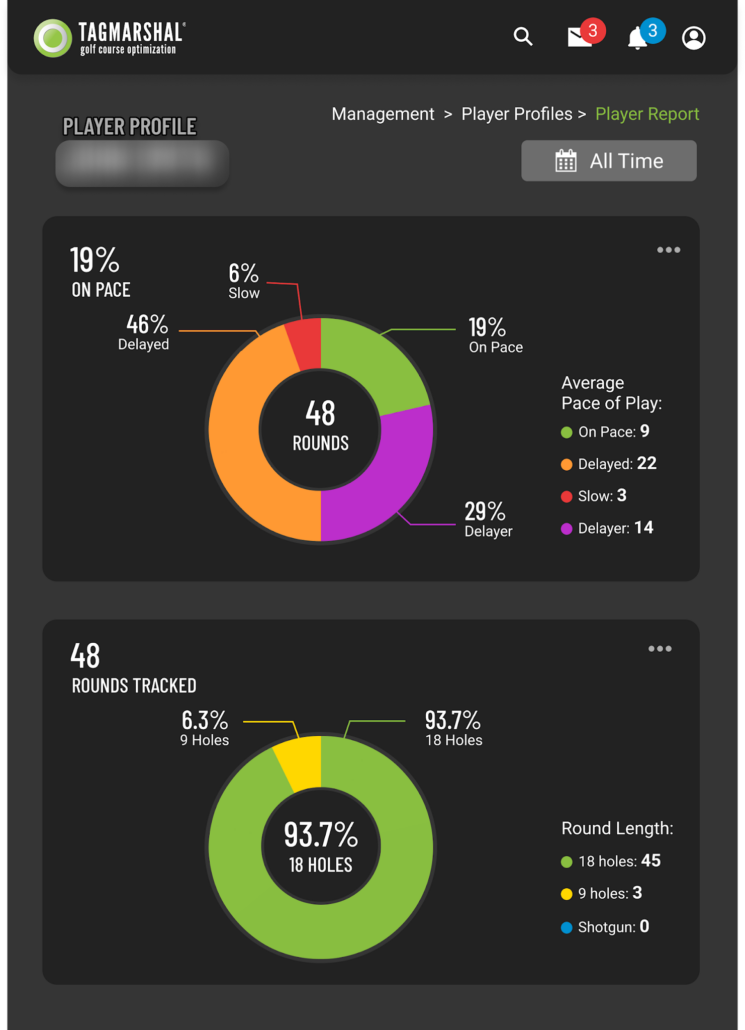
Brandt can also easily pull up a Track Map for any round, which shows the progression of a round around the course with pace indicators throughout and any interactions logged. This is another vital tool to guide pace-based conversations.
Hazeltine measures the impact that guests have on pace and, if necessary, Brandt uses the data to ask members to work with him to ensure that guests aren’t adversely affecting pace and flow of play.
This data and reporting is shared with all Hazeltine members via a monthly newsletter, building awareness around pace and highlighting the measures that the club is taking to ensure the optimal member experience.
Conclusion
The 2025 PGA Show was a clear indicator of the health of the golf industry, which continues to go from strength to strength as more first-time players take to the course.
Erin Hills and Hazeltine National are great examples of how technology, when utilized effectively, will reshape on-course operations for the better.
It’s important to remember that the lessons learned from these leading operators are applicable across any course type, not just Major hosts.
Tagmarshal’s optimization technology enables smaller teams to operate more effectively and efficiently, which makes it ideal for the course down the road that wants to positively impact the player experience without a significant capital outlay.
ABOUT TAGMARSHAL
Tagmarshal, the market leader in on-course optimization technology, provides courses with full, real-time operational oversight and reporting, giving golf operators the tools to manage pace and flow of play effectively, resulting in enhanced player experiences, increased efficiency through automation, and additional revenue generation.
Tagmarshal’s technology has collected over 10 billion data points from more than 75 million rounds of golf and has relationships with in excess of 700 partners, including Hazeltine, Whistling Straits, Baltusrol, Fieldstone, Bandon Dunes, Serenoa and Erin Hills.
Tagmarshal partners with several golf management groups, private, daily fee, public and resort courses, including 40 of the Top 100 US courses, as well as many $40-$60 green fee courses, which are seeing excellent results using the system.
 WATCH DEMO
WATCH DEMO